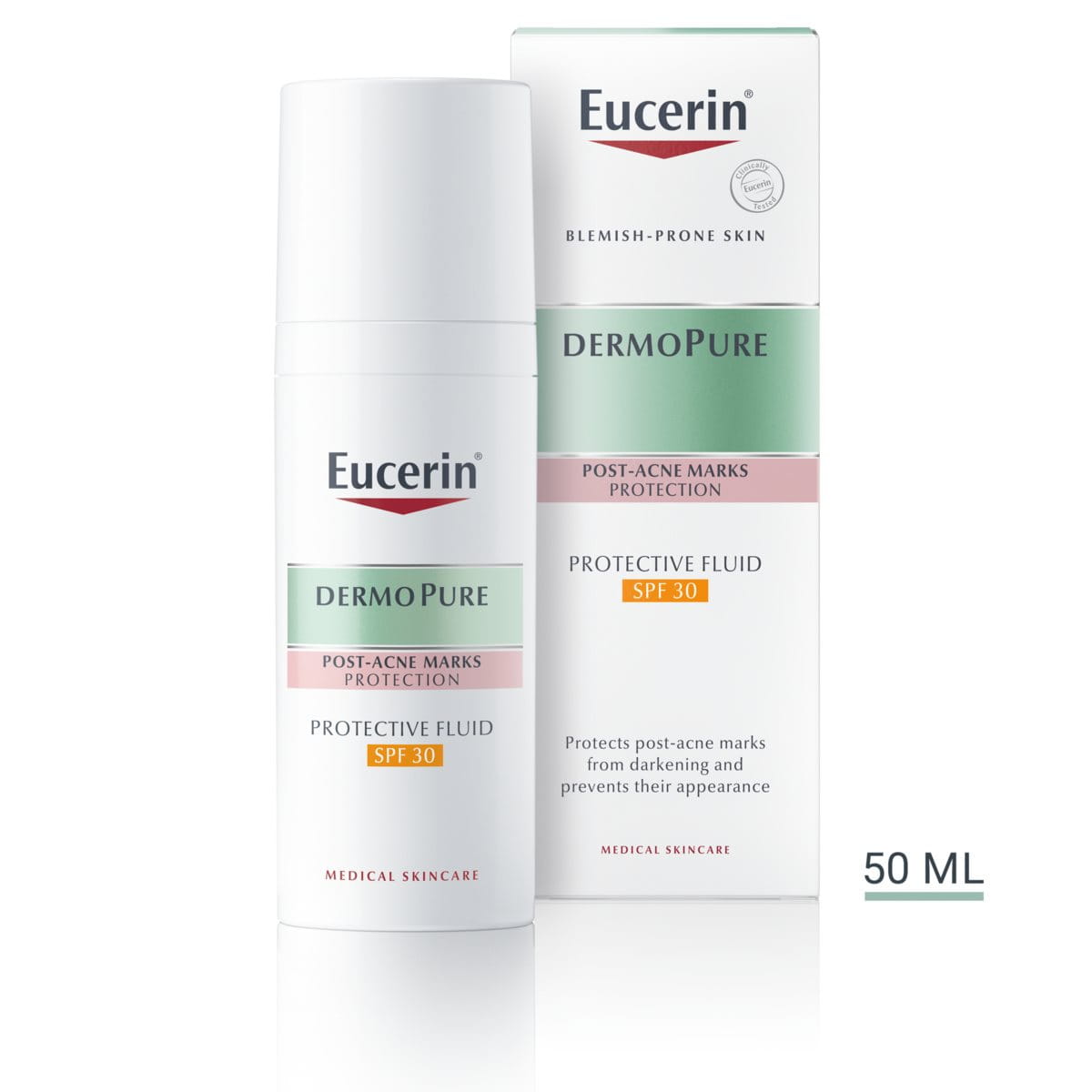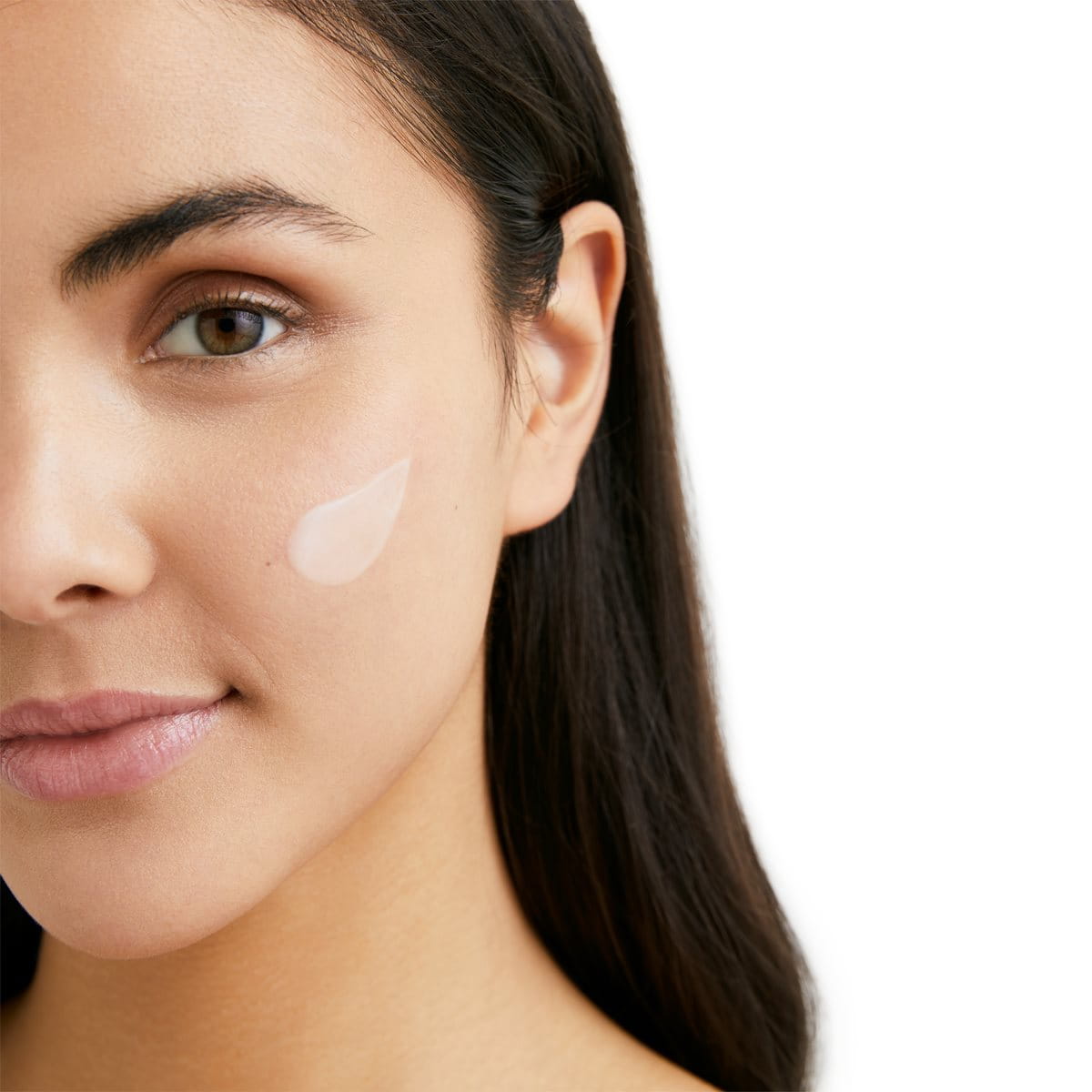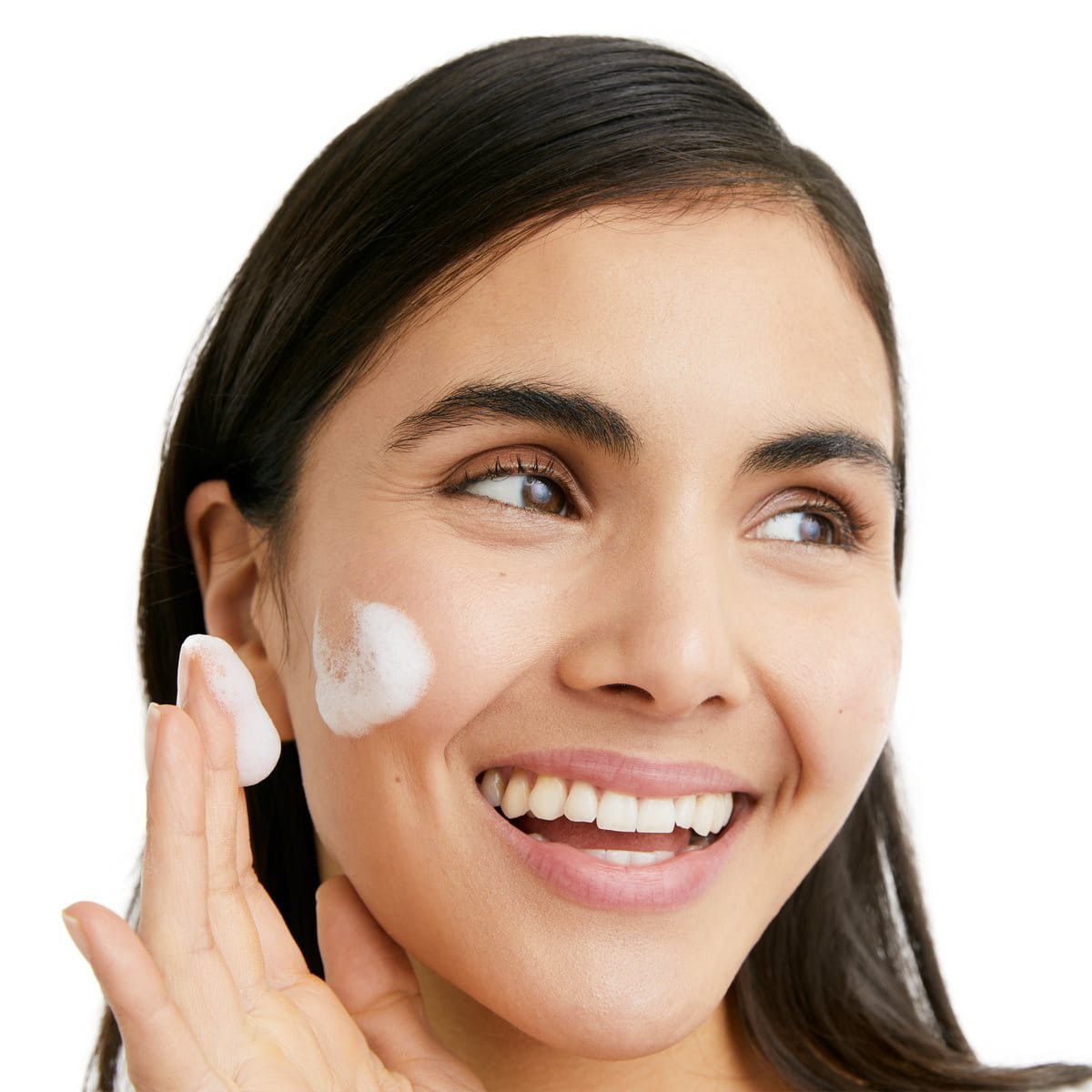We take responsibility. For your skin. And our planet.

We take responsibility. For your skin. And our planet.
About
Eucerin DermoPure Protective Fluid with SPF 30
Acne is a fact of life for a huge cross-section of society. It affects up to 95% of adolescents and 40% of adults*. Many people experience post-acne marks (Post-inflammatory hyperpigmentation or PIH for short) long after the acute acne has vanished. After tackling blemishes, they are still stuck fighting their post-acne marks, which can persist for several years or even a decade** with the sun aggravating the symptoms.
About 1 in 2 people experience post-acne marks. Men and women are equally susceptible, and all skin types can get post-acne marks, although it is more prevalent in darker tones of skin***.
Eucerin DermoPure Protective Fluid SPF 30 enables you to prevent blemishes and finally beat post-acne marks with 3 key factors:
The Protective Fluid SPF 30 has enhanced efficacy when used together with the Eucerin DermoPure Triple Effect Serum. In fact, respondents in our studies report that the products not only improved their lives and provided relief, but also have the highest efficacy against post-acne marks of any products they have ever tried. “The combination beats post-acne marks,” say 95% of users****.
* Zouboulis, C. C., Hautarzt. 2014; 65(8):733–750.
** Abad-Casintahan, F. et al., “Frequency and Characteristics of Acne-Related Post-Inflammatory Hyperpigmentation.” J Dermatol. 2016; 43:826–828.
*** Kaufman et al., Am J Clin Dermatol. 2018; 19:489–503, Perkins et al., JEADV. 2011; 25(9):1054–1060.
**** Product in use study with 100 volunteers, 8 weeks of regular usage twice a day of both Serum and Fluid SPF 30.
How to Use
Step-by-step guide for DERMOPURE Protective Fluid SPF 30
Cleanse skin in the morning and evening: am: to remove the sebum and dead skin cells that have accumulated overnight pm: to remove make-up and free skin from the day’s dirt Use gentle cleansing products such as Eucerin DERMOPURE Cleansing Gel with lukewarm water and follow with an appropriate toner. You may also benefit from using a scrub once a week to unclog pores and refine skin texture. We do not recommend using an alcohol-based toner and the scrub alongside acne medication as it can make skin more sensitive. If you like the refreshing feel of a toner, try the alcohol-free Eucerin DERMOPURE Micellar Water instead.
Main findings
What are post-acne marks (post-inflammatory hyperpigmentation or PIH for short)?
PIH is a type of hyperpigmentation of the skin that is mainly triggered by the way skin regenerates after inflammation. It can affect the face and body, typically especially UV-exposed areas, and appears as flat spots of hypercoloration. These range in color from pink to red, brown or black, depending on skin tone and the depth of hypercoloration. The root cause is increased melanin production, the pigment that defines the color of a person’s skin, which is stimulated by inflammatory factors. The blemish triggers melanocytes – the melanin-producing cells – to release excessive melanosomes (pigment granules). The excessive pigment granules darken and discolor the formerly stressed area. Once initial blemishes have subsided, spots of hypercoloration, so-called post-acne marks, can remain.
Additionally, sun exposure can aggravate PIH symptoms, darkening the affected patches and prolonging the time it takes for them to fade. Most acne-related PIH will eventually fade over time, but it can take several years or even a decade until it is fully gone*.
*Abad-Casintahan, F. et al., “Frequency and Characteristics of Acne-Related Post-Inflammatory Hyperpigmentation.” J Dermatol. 2016; 43:826–828.
Who is affected by post-acne marks?
Post-inflammatory hyperpigmentation is common among many acne sufferers since a root cause for acne is inflammation. Those post-acne marks left behind after blemishes heal can be even more aggravating and emotionally distressing than acne itself. Men and women are equally susceptible, and all skin types can get post-inflammatory hyperpigmentation, although it is more prevalent in darker tones of skin, with over 65% of the Black Americans experiencing it, followed by 53% of Hispanics, 47% of Asians and 25% of Caucasians*. This means that we need effective and tolerable skincare fighting both blemishes and post-inflammatory hyperpigmentation for consumers all over the world.
*Kaufman et al., Am J Clin Dermatol. 2018; 19:489–503, Perkins et al., JEADV. 2011; 25(9):1054–1060.
How can post-acne marks be prevented?
PIH is mainly triggered by the way skin regenerates after an inflammation. To prevent it, though there are no guarantees, avoid picking at or pressing your pimples. The best prevention is, however, to target acne-related PIH at the root, meaning preventing blemishes from appearing and getting inflamed. Use a mild but effective cleanser and use light, non-comedogenic skincare with anti-inflammatory ingredients, like licochalcone A and keratolytic salicylic acid, which are used in our Eucerin® Dermopure Triple Effect Serum to prevent pores from clogging.
Additionally, sun exposure can aggravate PIH symptoms, so we recommend sun protection. Limit the time you spend in the sun and keep out of the sun during its most intense hours. Wear protective clothing and sun hats whenever possible and apply a sun protection factor of at least 30, to protect marks from darkening and help prevent new marks from appearing by using specialized skincare like Eucerin® Dermopure Protective Fluid SPF 30.
What makes the DermoPure Protective Fluid SPF 30 so effective on blemish-prone skin with post-acne marks?
With a high sun protection factor (SPF) of 30 plus UVA, it effectively protects from harmful ultraviolet rays, which contribute to darkening of post-acne marks and prolonging the time for them to fade. In addition, it contains antibacterial decanediol, which helps to prevent blemishes, and licochalcone A to soothe irritation. It also contains sebum-regulating technology to leave the skin with a long-lasting matte and non-shiny look.
What is the benefit of using both DermoPure post-acne marks products together?
The products have enhanced efficacy when used in combination. This is one of the findings of our product-in-use study, among other user responses. In an eight-week study, three groups of 100 volunteers each tested the products: one group used Eucerin® Dermopure Triple Effect Serum alone, one group used Eucerin® Dermopure Protective Fluid SPF 30 alone, while the third group used a regimen of the two products in combination.
After eight weeks, the scores for the regimen cell were the strongest – after regular usage twice daily, volunteers even agreed that it has the highest efficacy of any solution they’ve ever tried* In fact, 95% of users say the combination finally beats their post-acne marks*.
*Product in use study with 100 volunteers, eight weeks of regular usage twice daily.
Read also some related articles
Decanediol, Licochalcone A
Learn More

